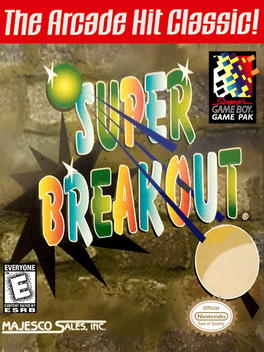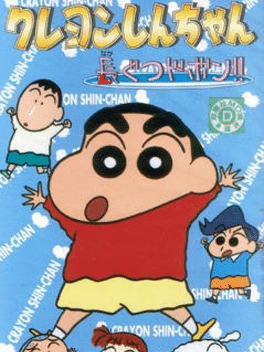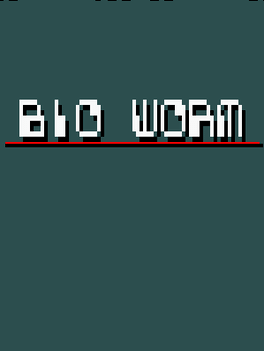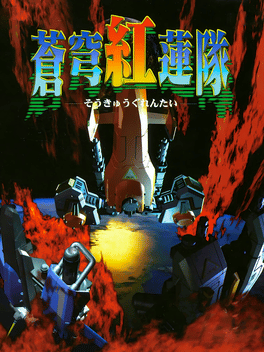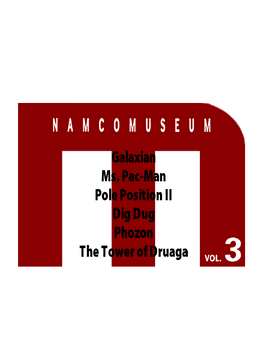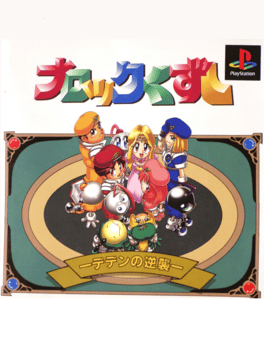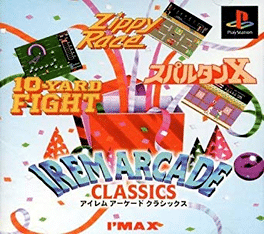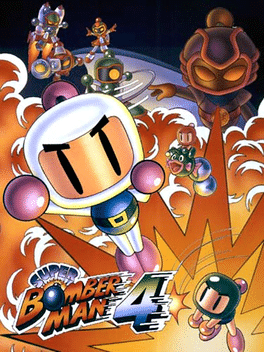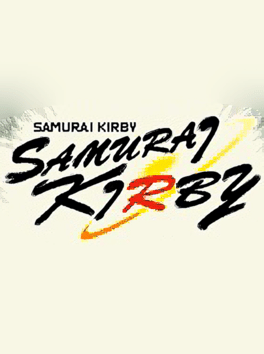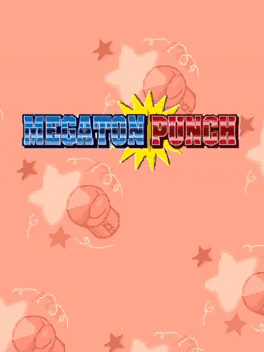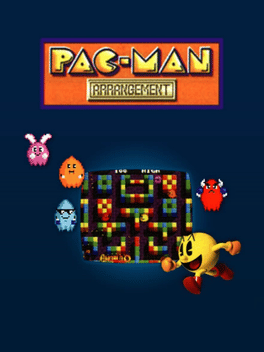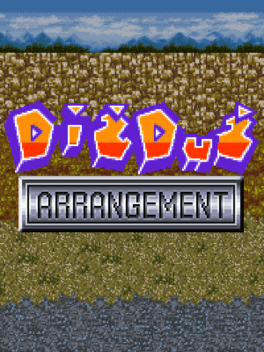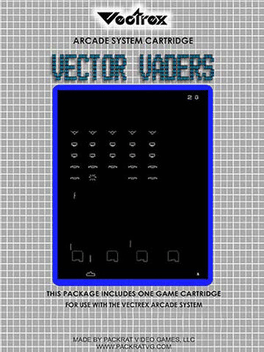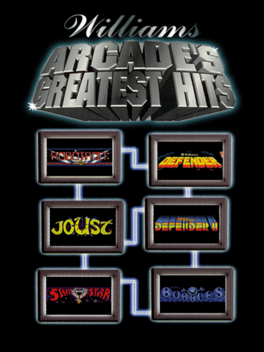Newest Arcade Games - Page 167
-
Super Breakout
1996
-
Silhouette Stories
1996
Silhouette Stories
1996
Have you ever played the classic Taito game Qix or any of the Gals Panic game series? In that case you know what Silhouette Stories is about. The objective is to uncover the silhouette portion of background with a marker until at least 80% of the silhouette is uncovered. When capturing background, only the enclosed area without the stage boss is uncovered, so it is possible to capture 100% of silhouette without capturing the entire background, by limiting boss's movement to an area without silhouette. The plot of Silhouette Stories begins when a young kid finds a strange star that talk to him and start to go with him around the town where they will meet different characters until the puzzle game starts. To advance in the game the player have to solve every silhouette but the difficult part is that there is only one life to do it and limited number of continues, and the silhouette starts from the beginning every time that the player use a continue. The game got lots of humour, nice cartoon graphics, excellent aud -
Crayon Shin-chan: Nagagutsu Dobon!!
1996
A multiplayer action game featuring Shin-chan attempting to splash his clones with water. -
Die Hard with a Vengeance
1996
In Die Hard with a Vengeance, the player goes on a joyride driving a taxicab, sports car, and dump truck throughout all of New York City and is tasked with finding and defusing several explosives before they can go off. -
Bio Worm
1996
Bio Worm
1996
Bio Worm is a homebrew game for the SNES. It is an arcade game where you have to shoot your enemies on a Pac-man style battlefield. -
Bomberman Collection
1996
-
Soukyuu Guren-tai
1996
Soukyuu Guren-tai
1996
Soukyuu Guren-tai is a vertically scrolling shooter game released by Raizing in 1996 for Arcades, with a Saturn port released in 1997. The game is unusual in that, rather than using a 3:4 aspect ratio to better suit the vertically-oriented gameplay, it uses a horizontal monitor (4:3) in the style of Neo Geo vertical shooters as well as the later Radiant Silvergun and Giga Wing. There is an English version of the game titled Terra Diver, but it was never officially released. -
Namco Museum Vol. 3
1996
Namco Museum Vol. 3
1996
star 6.2The third PlayStation volume contains: Galaxian (1979) Ms. Pac-Man (1981) Dig Dug (1982) Phozon (1983) Pole Position II (1983) The Tower of Druaga (1984) The majority of the included games were well-known worldwide but Phozon and The Tower of Druaga were relatively unknown. Two unique versions of The Tower of Druaga were also hidden in this volume: one called "Another Tower", and the other called "Darkness Tower". Both are harder than the original and require different methods to beat the game. -
Block Kuzushi: Deden no Gyakushuu
1996
Classic puzzle "Breakout" appeared in PS. Simple rule to go break it hit a ball into a set of blocks on the screen control a paddle at the bottom of the screen is intact, items of more than 20 kinds will liven up the game. In addition to the story mode character of five an outstanding performance, it is equipped with a large number of mode to save the princess. -
Irem Arcade Classics
1996
Irem Arcade Classics
1996
Irem Arcade Classics (アイレム アーケードクラシックス) is a compilation of three arcade games by Irem, released exclusively in Japan for the Sega Saturn and Sony PlayStation. The game consist of 10-Yard Fight, Spartan-X (Kung-Fu Master) and Zippy Race (Motorace USA) -
Super Bomberman 4
1996
Super Bomberman 4
1996
star 8.1The fourth SNES game in Hudson's explosive multiplayer series sends White Bomber and Black Bomber hurtling through time. -
Samurai Kirby
1996
Samurai Kirby
1996
Samurai Kirby is a sub-game of Kirby Super Star. This sub-game was also ported and released as a trial version for the Satellaview as part of the Kirby no Omochabako (Kirby's Toy Box) series of standalone minigames. No footage or file of this version has since been found. -
Megaton Punch
1996
Megaton Punch
1996
Megaton Punch is a sub-game of Kirby Super Star. This sub-game was also ported and released as a trial version for the Satellaview as part of the Kirby no Omochabako (Kirby's Toy Box) series of standalone minigames. No footage or file of this version has since been found. -
Pac-Man Arrangement
1996
Pac-Man Arrangement
1996
star 5.3A remake of the original Pac-Man, with modernized presentation and gameplay. -
Dig Dug Arrangement
1996
Dig Dug Arrangement
1996
Dig Dug Arrangement is, as the name suggests, a remake of Namco's 1982 arcade game Dig Dug; it was released in 1996, as a part of the compilation arcade game, Namco Classics Collection Vol. 2, and later rereleased alongside the original and ten others in the Nintendo GameCube, PlayStation 2 and Xbox versions of Namco Museum in 2002. -
Barrack
1996
Barrack
1996
A JezzBall clone with delightful gameplay additions and beautiful artwork. Official description: Barrack's goal is deceptively simple; there are a number of balls on the play field that are bouncing like a neurotic on a sugar rush. Your job is to use your shooter to isolate them. Sounds easy, right? -
Kirby no Omochabako: Hoshi Kuzushi
1996
This is a breakout-style game where Kirby is the ball. The bat is a trampoline held by two Rick-like hamsters. The game uses a star-counter, which decreases periodically on its own. Hitting any one block will dislodge several stars which fall down from where the block was - catching one will increment the player's star counter by 5. If Kirby (the ball) hits the ground when the star counter is higher than zero, he will bounce once, so the player gets one more chance to catch him. Otherwise, the player loses a life. Every time Kirby touches the ground, the star counter is reduced by 10. Once the player clears the first five stages, King Dedede appears in stage 6. This stage has no blocks, so the player's star counter cannot increase. Dedede throws hammers from time to time - if Rick is hit, the player will not be able to control him for a short while. Hitting Dedede enough times will defeat him. Like every other sub-game in Kirby's Toy Box, this game could only be downloaded by the Satellaview during the brief peri -
Vector Vaders
1996
Vector Vaders
1996
Aside from having vector graphics and running a bit slow (although the game does speed up as more and more invaders are shot), this is a pretty standard Space Invaders-type game for the most part. A formation of invaders (25 total) march from side to side while dropping bombs and they will drop down a notch once the formation reaches the edge of the screen. The player’s laser base can take cover behind one of four bunkers on the screen, which the bunkers can withstand 16 shots from enemy and/or player fire before disappearing. A flying saucer will also pass overhead during a level and is worth big points if shot. The player starts off with three laser bases and the game will end once all bases are destroyed or if the player is “invaded” by the aliens reaching the bottom of the screen. However, an extra base is earned if over 3000 points are scored. The level number that the player is currently on is displayed at the bottom right corner of the screen. -
Williams Arcade's Greatest Hits
1996
Williams Arcade's Greatest Hits for PlayStation and Sega Saturn is a compilation of the Arcade games: Robotron: 2084, Joust, Sinistar, Defender, Defender II and Bubbles. Also included are video interviews with the original developers. The Sega Saturn release was published by Midway Home Entertainment and retitled to Midway Presents Arcade's Greatest Hits. It was also released for Super Nintendo Entertainment System and Sega Mega Drive/Genesis but without Bubbles and the video interviews.
